Natural Fun!

This exhibition-installation was presented in September at the Dorchester Square in Montreal. It was part of the Artch event whose mission is to help artists present their work in professional circles and sell it. To do this, they provide selected artists (about twenty out of more than 150) with an intensive 3-week training course on the artist and his environment. This educational segment focuses on the artist as an entrepreneur with training given by professionals in the field. In addition to this training, a grant of assistance to the production is given to the artists. Finally, the highlight is the exhibition in Dorchester Square, where we could invest our 16 'x 16' module freely. The installation you see is the one I presented.
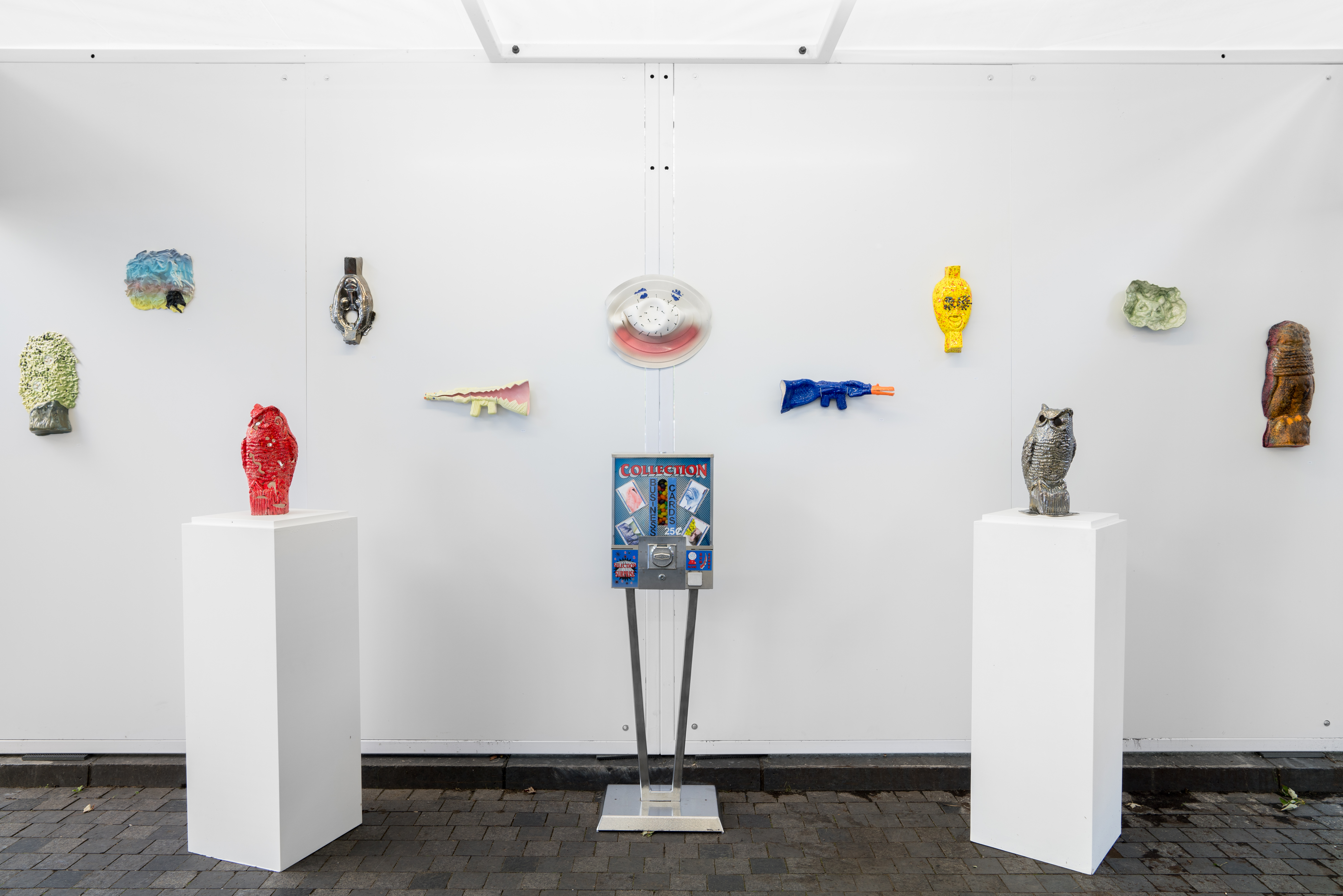
I invested the booth with my sculptures (no cyanotypes or paintings this time) and two new additions; vending machines. You may remember the one who was at the center of the Pingo exhibition and who, for 25cents, was distributing bulk ceramics shards. It's been a long time since I wanted to produce another machines and find other ways of distribution. In addition, I sold the one from Pingo exhibition at a Toronto fair, and I wanted to replace it. So I created two new machines. This one was originally used to distribute stickers and sweets. For $ 1, the consumer received a sticker and an eraser. I replaced the mechanism to lower the price to 25cents (I am that smath) and I exchanged the stickers with business cards (more than 10 different models) signed and numbered by hand. And instead of gum, you would get goooood Jelly Beans ... Yum!

I decided to keep the original background, put on display some models of business cards and write business cards to announce what the machine was distributing. During the 4 days of the event, I SOLD more than 100 business cards. The funny thing is that I thought at first that people would buy the card and receive bonus candies. The fact is, that many passersby were so attracted to sweets that they did not even understand that they would get business cards. They bought these delicious treats, and received a bonus business card! In this sense, marketing is perhaps even better!
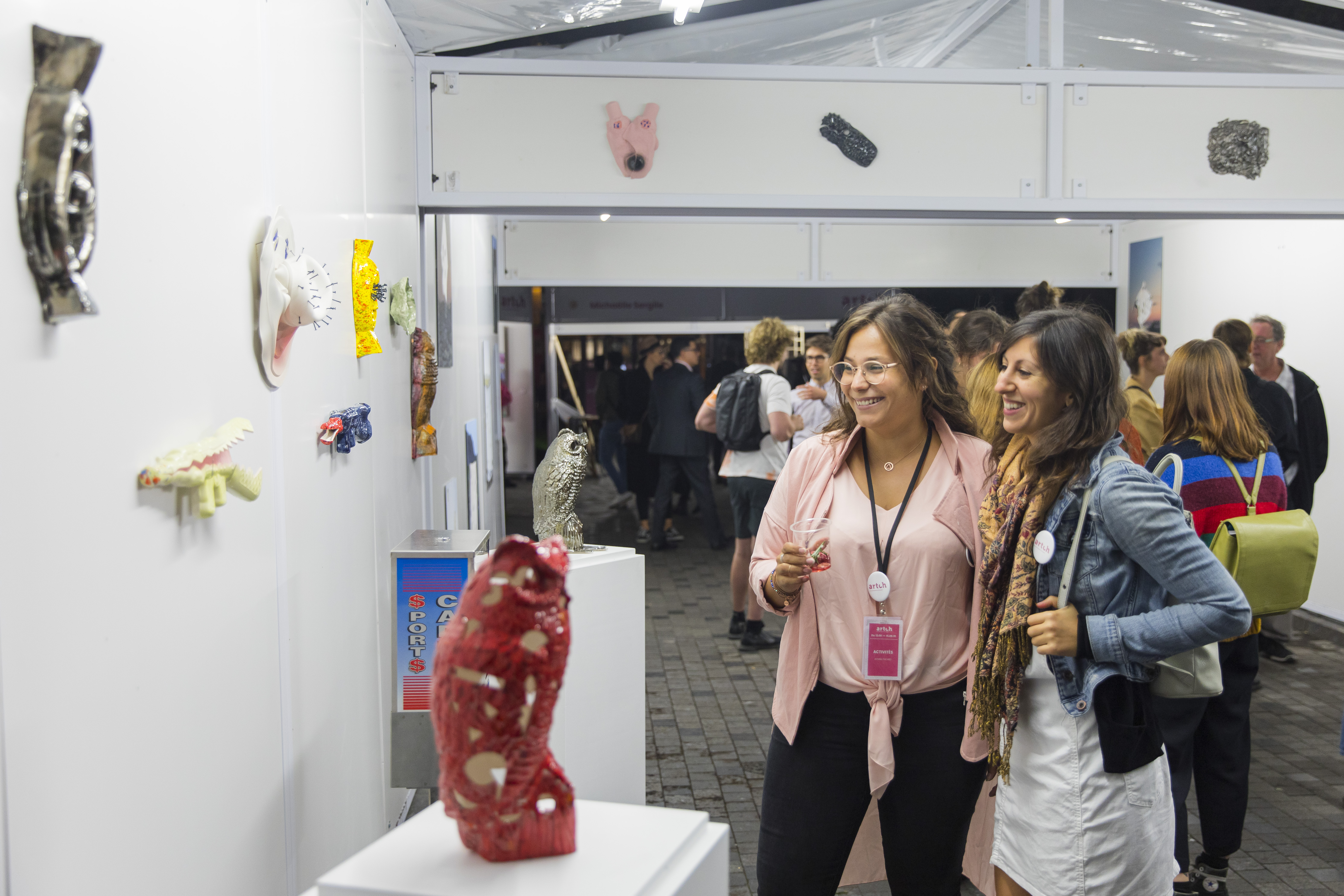
The second distributor works on the same principle as that of Pingo’s, that is to say, it distributes ceramic shards. But unlike this first, the shards are enclosed in 2 "capsules. This facilitates the conservation of the work, but also changes its mode of perception. I like to see this capsule like the frame around a painting or “le socle” raising a sculpture , establishing a distance between reality and the artwork.
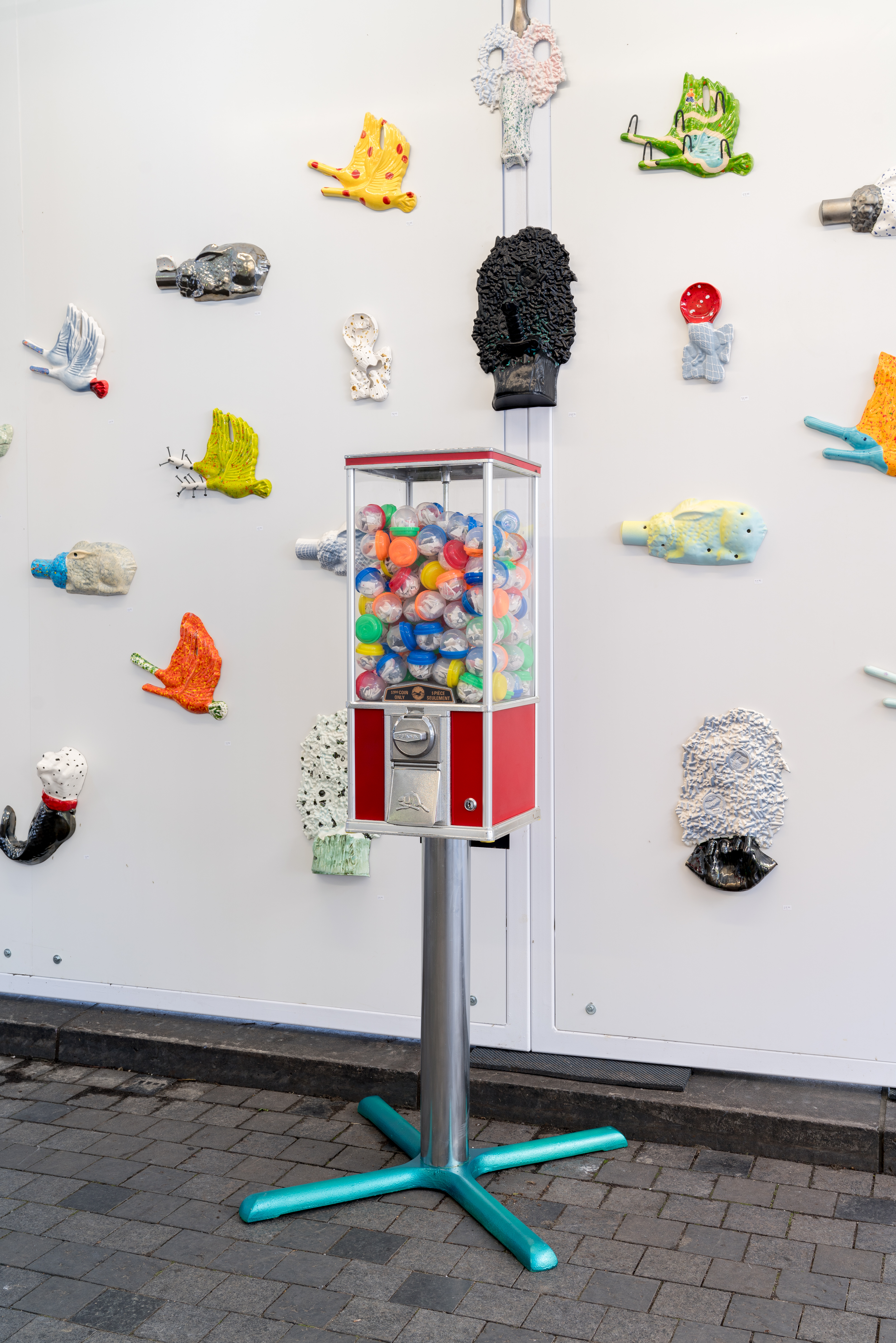
I also like to see this work (the bonbonnière) as an installation. It contains several works in the capsules, which in turn could be considered as an installation. Each fragment counts as an artwork, but together they create another. This is also how I conceive my work more globally. Some (mostly) people in the contemporary arts community, argue that my work is not in the individual artworks themselves, but rather in whole ot them and their relationships. The individual artworks one would buy would only serve as a souvenir of the installation visited. According to them, I should not sell the pieces separately, since it is the integrity of the whole that should prevail.
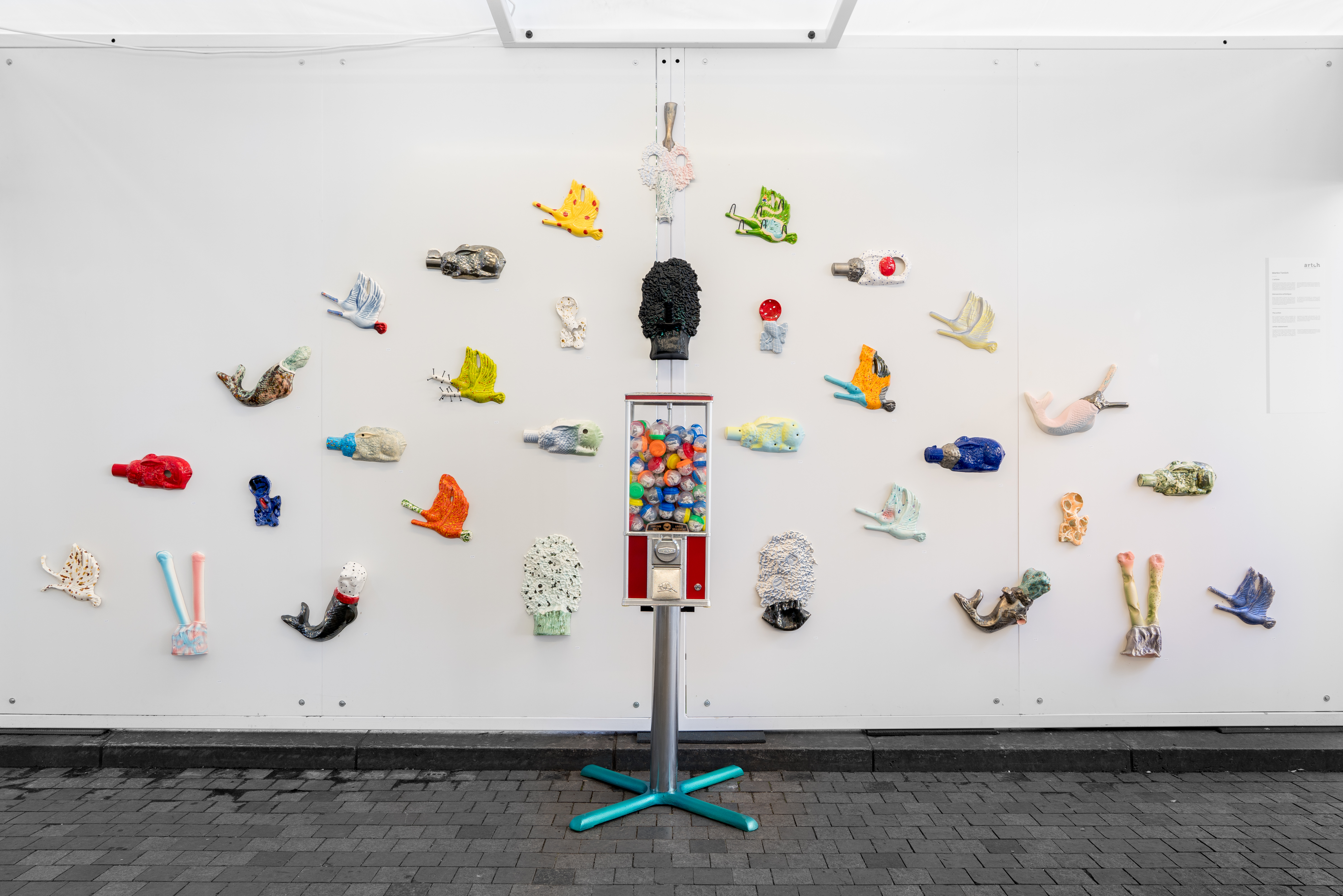
I agree with this idea that the individual artwork operates differently than that contained in the whole. I also see the whole as a work, it is not for nothing that I proceed by dynamic installation and I skip the classic museum presentation. But I believe that both levels are paramount. I think that when someone buys one of my works and installs it in their living space, the provocative capacity of philosophical reflection is increased tenfold. Fo example, the visiting friend who falls on this work is really more conducive to ask questions about the identity of this one.

In addition, the goal for me is that artwork replaces the stupid object of mass consumption. I start with theses stupid objects to produce my works. I modify them to free the meaning, then I mold them and individualize them. For me, art should take the place of non-art everywhere in the world. Art does not have to cost more than the trinket if it follows the industrial principles. However, I believe that art is art by its form, therefore it can borrow industrial production techniques. This is the attitude that Dürer put into practice when he equipped himself with presses and applied a process, then exclusively industrial, to art. This is how his rhinoceros could be found in everyone’s home. The low cost of his works and the large possible distribution of these added a new economic and social dimension to art. Not only could a shoemaker buy a work and live with it, he was also led to question new territories, new creatures, new worlds. How can the direct experience of this work not be an opening of oneself, an external gaze that one throws on one's own condition in relation to the other? This dual approach to accessibility is possibly the most humanistic position an artist can adopt not only because it makes art available to everyone, but also because in doing so, it recognizes its importance, positions it and affirms it as characteristic and intrinsic necessity of human existence. Whoever can not exploit this facet of his humanity characterized by art is forced to give up a fundamental part of his nature.

It is on the basis of this principle that, I believe, it is necessary to base the production and distribution of art. It is obvious that the needs are multiple, so it is not only normal, but also necessary that this process unfolds on several levels. But it remains that art must compete with the mediocre and win against him. The aesthetic and social value of the latter being zero, art must win the popular battle. To do this, it remains for him to apply the same economic strategies as the other in order to defeat it. Art is not a luxury, it is a necessity: it is a basic product that should not be taxed. Art is for everyone, necessary for all, and must be found everywhere. Art is popular. Art is freedom.
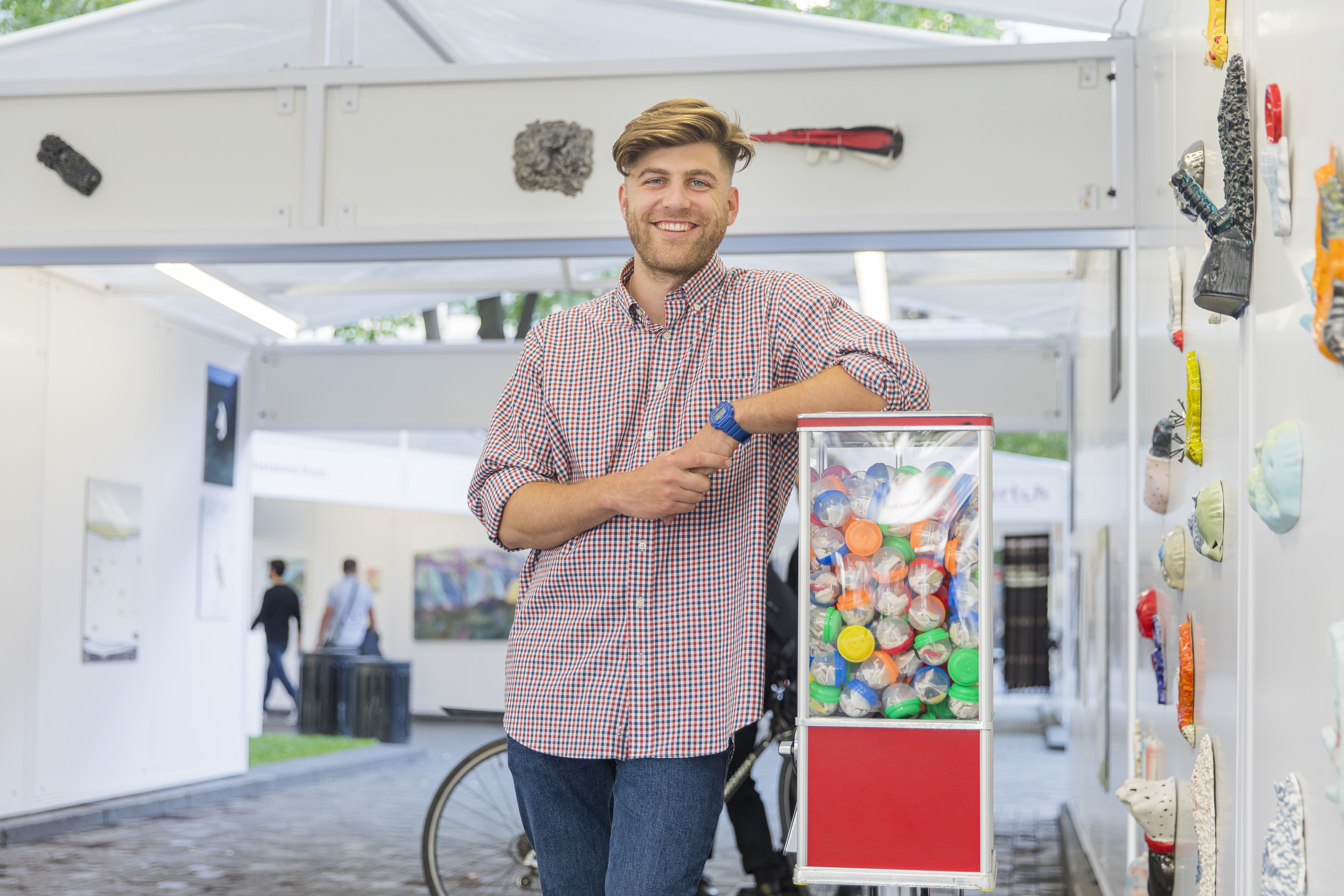
Statistics:
More than 100 numbered and signed business cards sold.
More than 50 capsules containing shards sold.
27 of wall sculpture sold.
2 standing sculptures sold.
Thanks:
I thank Sarah Nolin who took a whole day to help me in the composition and hanging of this installation!
I thank all the Artch team who made this adventure possible.
A big thank you to the photographers who immortalized the work.
Photographs 1,4 and 9 are attributed to Thierry Du Bois.
Photographs number 2, 3, 5, 6, 8 are attributed to Jean-Michael Seminaro.
Photography number 7 is attributed to Mike Pattern.
Finally a big thank you to my parents for the support and the logistics of the equipment during assembly / disassembly.